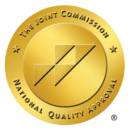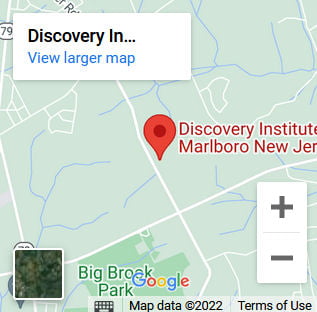Addiction is a long-term illness that can be effectively managed over time, provided there is access to high-quality treatment services, coordinated medical care, and ongoing support. Regrettably, our society and healthcare system have been slow to acknowledge and address addiction as a chronic yet treatable condition, resulting in millions of Americans lacking the necessary treatment and support services to maintain their long-term health.
Over 20 million individuals in the United States suffer from a substance use disorder, yet a significant number do not receive the required treatment. Research from the Substance Abuse and Mental Health Services Administration (SAMHSA) indicates that approximately 54.2 million people aged 12 and older (19.1%) required treatment for a substance use disorder in the previous year, but only 23.6% of these individuals received the necessary care.
Failure to address addiction can lead to severe repercussions, such as health complications, social alienation, and a heightened risk of overdose, along with other health hazards. This underscores a significant public health concern. Although there are resources and care alternatives accessible, evidence indicates that a considerable gap in addiction treatment persists, affecting the welfare of millions of Americans facing substance use disorders.
This gap is characterized by the disparity between those needing substance abuse treatment and those who receive it. It presents obstacles in terms of recovery and stems from both perception issues and access challenges. Many individuals may not recognize their substance use disorder or may not grasp the importance of pursuing treatment. Various factors contribute to this treatment gap, including a lack of awareness and understanding of the disorder, stigma, including feelings of guilt and shame, treatment costs, limited access to services, and insufficient insurance coverage or financial resources to afford rehab.
Regardless of the circumstances, various developments are taking place that could enhance the accessibility of treatment for a larger number of individuals. Modifications in insurance policies may facilitate access for an increasing population to receive necessary treatment. Advancements such as telehealth technology enable individuals in remote locations to engage with healthcare providers without the need for extensive travel. Furthermore, alternative treatment options, including 12-Step programs and other self-help initiatives, are available at no cost and are widely accessible. Although numerous obstacles persist, positive indicators suggest that treatment may become more attainable for groups that have historically faced challenges in accessing recovery support.
Discovery Institute is Partnering With Rutgers University’s Addiction Medicine Department
 The Discovery Institute in Marlboro, New Jersey, is partnering with researchers from the Rutgers University Addiction Medicine Department to uncover the personal, environmental, and treatment-specific factors that influence substance use disorder (SUD) treatment outcomes for people in residential treatment programs.
The Discovery Institute in Marlboro, New Jersey, is partnering with researchers from the Rutgers University Addiction Medicine Department to uncover the personal, environmental, and treatment-specific factors that influence substance use disorder (SUD) treatment outcomes for people in residential treatment programs.
Scientific breakthroughs in the healthcare field often take years to be put into practice. This research, conducted by Rutgers University, is critical in addressing the complex and highly individualized nature of SUD recovery. By breaking down the study’s objectives and the potential impact, we highlight how these insights could revolutionize recovery strategies, offering fresh hope for individuals battling addiction.
As mentioned above, there’s a clear gap between addiction research and how treatment is delivered in many settings. The Discovery Institute’s mission is to help narrow the gap in healthcare by integrating research findings directly into our approach to treating addiction and mental illness.
By combining clinical experience with current data, we help clients receive informed and effective care. Our evidence-based methods allow individuals to benefit from the latest research and technology without waiting for it to trickle into standard practice, improving outcomes and long-term recovery success.
In this blog, we explore the groundbreaking study conducted by researchers at Rutgers University in partnership with the Discovery Institute to understand factors that impact treatment success and long-term recovery.
Challenges Men and Women Face With Addiction Treatment
Men and women experience addiction differently. Their bodies, hormones, and life roles all influence how addiction affects them. Men often use substances to feel powerful or escape emotional pain, while women may use substances to cope with trauma or stress.
Research shows that women develop addiction faster after first use, a phenomenon known as “telescoping.” Men are more likely to enter treatment through the legal system or after violent behavior. Women often face stigma, childcare issues, or fear of losing custody, which can delay seeking help. Men may avoid treatment due to shame or not wanting to appear weak.
Some programs have been built mostly for men, leaving women’s needs unmet. Evidence shows that gender-specific programs can improve outcomes for both men and women.
History Of Rehab: Origins Of Treatment
Early rehab efforts began in the 1800s when addiction was seen more as a personal weakness than a medical issue. In 1864, New York became home to one of the earliest recognized rehabilitation facilities, the New York Inebriate Asylum. These early centers focused on isolation, discipline, and moral guidance rather than medical treatment.
Patients were often treated with cold baths, hard work, and strict rules. By the early 1900s, “inebriate homes” and “drying-out farms” became common, but few had lasting results. People were often forced into these centers by families or courts. The medical field did not yet fully understand addiction as a disease. Most programs lacked trained professionals or medical support.
Over time, rehab began to shift from punishment to care. As science advanced, more people started to see addiction as a brain disorder, not just bad behavior. This change laid the groundwork for today’s more supportive, evidence-based rehab approaches.
What Widespread Misunderstandings About Addiction Still Exist Today?
Many people still believe addiction is a choice or a sign of weak character, but this is not supported by science. Research shows addiction changes how the brain works, especially areas linked to judgment, reward, and self-control.
Another myth is that someone must hit “rock bottom” before getting help. Early treatment improves outcomes. Some think only certain types of people become addicted, but addiction can affect anyone, regardless of background or lifestyle.
There’s a false idea that medication-assisted treatment simply replaces one drug with another. It helps balance brain chemistry. People often assume relapse means failure, but relapse can be part of the recovery process and doesn’t erase progress.
Others think treatment is one-size-fits-all. Effective care is personalized and ongoing. These myths cause shame and keep people from getting help.
Early 20th Century Addiction Treatment Approaches
In the early 1900s, addiction was often treated through punishment instead of care. Many saw it as a moral failure. People with addiction were sometimes jailed, institutionalized, or forced into labor instead of being offered treatment. Hospitals rarely accepted people struggling with drug or alcohol problems.
The Harrison Narcotics Tax Act of 1914 limited opioid access and led to criminal penalties for users. Doctors feared treating addiction due to legal risks, pushing many users toward unsafe street drugs. Some cities opened “narcotic clinics,” but most were short-lived due to legal pressure. Religious-based groups began offering help through spiritual support and moral reform. Treatment often included isolation, prayer, and manual labor, not medical intervention.
Few programs addressed mental health, trauma, or social causes of addiction. This era laid the foundation for both stigma and reform in later addiction care. Change began as science and advocacy slowly challenged these harsh practices.
The Impact of the War on Drugs

The War on Drugs began in the 1970s and shaped addiction policy for decades. Its focus was on punishment, not treatment. In 1971, President Nixon declared drug abuse “public enemy number one.” Funding for enforcement increased sharply. More people were arrested for drug use, especially in poor and minority communities.
This strategy led to overcrowded prisons while failing to tackle addiction itself effectively. Mandatory minimum sentences kept many nonviolent drug users in prison for years. Rehabilitation programs were often defunded or replaced with harsh legal penalties. The focus on criminal justice over healthcare deepened stigma around addiction.
Communities of color were disproportionately affected by arrests, sentencing, and surveillance. Many families were torn apart, and resources were shifted away from prevention and treatment. Research now shows this strategy failed to reduce drug use long-term. Today, there is growing support for replacing punishment with health-based approaches.
The Changing History of Addiction Treatment
Addiction treatment has changed a lot over the last century. Earlier efforts focused more on control than healing. In the past, people with addiction were often seen as criminals or morally weak. Treatment methods were harsh and lacked scientific support.
By the mid-20th century, researchers began to understand addiction as a medical issue, not just a behavioral problem. Hospitals began opening detox units with trained medical staff. Therapies like counseling and group support became part of standard care. During the 1980s and 1990s, the use of behavioral therapy and medication-assisted treatment grew increasingly widespread.
The rise of brain imaging helped show how addiction affects the brain. Treatment became more individualized, using both science and empathy. Over time, care models expanded to include mental health and family support. Addiction treatment continues to grow as science, policy, and public attitudes evolve.
The Birth of Modern Treatment
Contemporary addiction treatment started to emerge around the mid-1900s, as scientific research began to influence how care was provided. The growing acceptance of the disease model of addiction played a key role in shifting public perception and reducing stigma.
Drug and alcohol detox centers began using medical supervision to help manage withdrawal safely. Residential treatment programs started offering addiction counseling, education, and support groups. Outpatient treatment programs allowed people to get help while living at home. In the 1950s, psychiatric hospitals began using talk therapy for addiction. By the 1960s and 70s, research on behavior and brain chemistry shaped new treatment tools.
This era also saw the first use of medications like methadone for opioid addiction. Treatment started, including group counseling and peer support. Including family members in treatment plans became a more frequent practice.
The Evolution of Addiction Treatment: From the 20th Century to Today
Addiction treatment has grown from simple support models to complex, science-based care. Each decade brought new understanding and tools. In the early 20th century, treatment focused on isolation, religion, and discipline. Medical care was rare.
By mid-century, research shifted views from moral failure to chronic brain disease, helping to change treatment goals. In the 1950s and 60s, therapeutic communities and group counseling gained popularity. Twelve-step programs grew across the United States, offering peer-led support outside hospitals.
The 1970s introduced more outpatient options and the use of medications for opioid addiction. In the 1980s and 90s, science revealed how drugs affect the brain’s reward and stress systems. This helped develop treatments based on behavior therapy, medication, and mental health care.
Today, treatment is more personalized and evidence-based. It includes therapy, medication, and support for physical and mental wellness. Modern programs respect the whole person and aim for long-term healing, not just short-term sobriety.
The Role of Mental Health
Mental health plays a major role in addiction. Many people with addiction also live with depression, anxiety, or trauma. This is referred to as a dual diagnosis or co-occurring mental disorder. It means both conditions need care at the same time.
If mental health issues go untreated, addiction treatment often doesn’t work as well. People may use substances as a coping mechanism and a way to self-medicate through their feelings of fear, sadness, painful memories, etc.
Integrated treatment addresses both mental health and substance use in one care plan. Cognitive behavioral therapy (CBT) supports individuals in identifying and reshaping negative thinking patterns. Medication may also help manage mood or anxiety during recovery.
Mental health support helps people build coping skills, self-esteem, and stability. Without it, old triggers and feelings may lead to relapse. Treating both conditions together gives people a better chance at lasting recovery.
The Future of Addiction Treatment: Innovations and Trends
Addiction treatment is entering a promising new era, marked by innovation and expanding possibilities. Advances in research and technology are making care more effective. One trend is the use of telemedicine. Virtual counseling and support groups are making treatment more accessible.
New medications are being developed to help people manage cravings and withdrawal more easily. Researchers are exploring brain stimulation therapies, such as transcranial magnetic stimulation (TMS), to treat addiction. Genetic testing may also help personalize treatment by identifying which medications and therapies will work best.
Holistic therapies, including yoga, mindfulness, and art therapy, are becoming more popular in recovery programs. These approaches treat the whole person, addressing both the mind and body. There is also a growing emphasis on community-based support, focusing on long-term recovery, not just treatment.
How Discovery Institute Uses Technology to Improve Addiction Treatment?
 Discovery Institute is using advanced technology to transform addiction treatment. One major tool is wearable health technology. These devices help staff monitor a client’s heart rate, stress, and other vital signs in real time. This is especially helpful during detox, when withdrawal symptoms can become dangerous. Instead of waiting for someone to report a problem, medical staff can spot it early and respond quickly.
Discovery Institute is using advanced technology to transform addiction treatment. One major tool is wearable health technology. These devices help staff monitor a client’s heart rate, stress, and other vital signs in real time. This is especially helpful during detox, when withdrawal symptoms can become dangerous. Instead of waiting for someone to report a problem, medical staff can spot it early and respond quickly.
By tracking symptoms like tremors or seizure risk, nurses can focus on giving care instead of constantly checking monitors. This system helps clients stay physically stable while allowing staff to focus on emotional and mental support.
Discovery’s approach also supports ongoing research. In partnership with Rutgers University, we’re helping experts study what supports long-term recovery. This involves the daily collection of biometric data (e.g., sleep patterns, physical activity), clinical indicators (e.g., mood, cravings), and genetic information. Together, we’re making addiction treatment more accessible, smarter, safer, and more personalized through technology and research. To learn more about our partnership with Rutgers and how to get started on your journey to recovery, contact us today.



